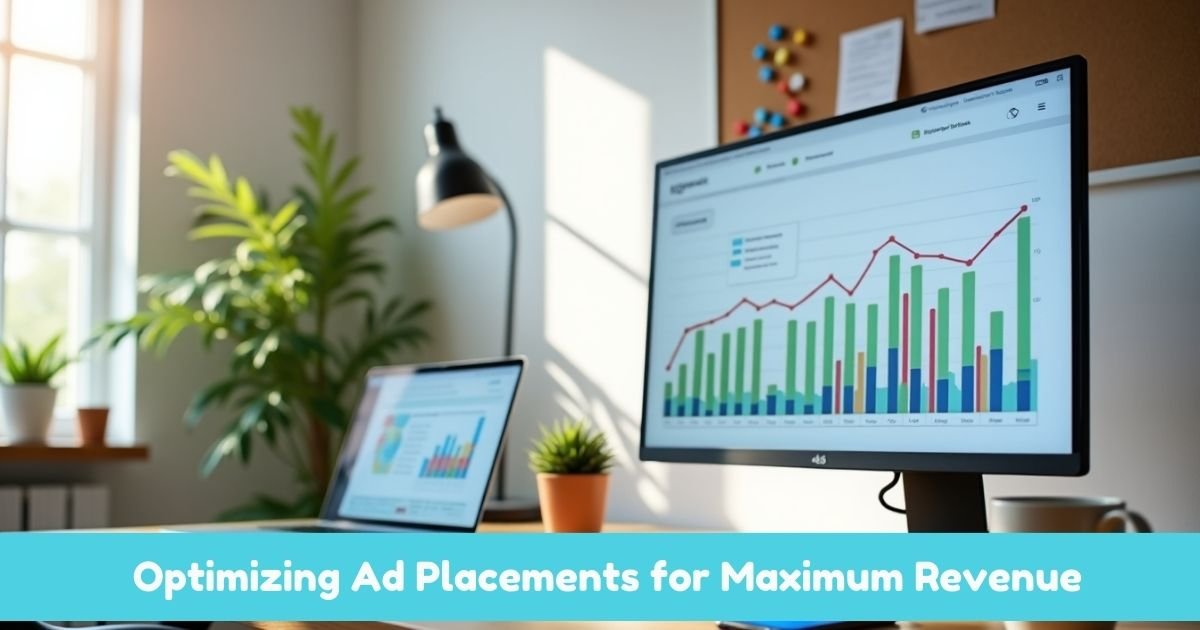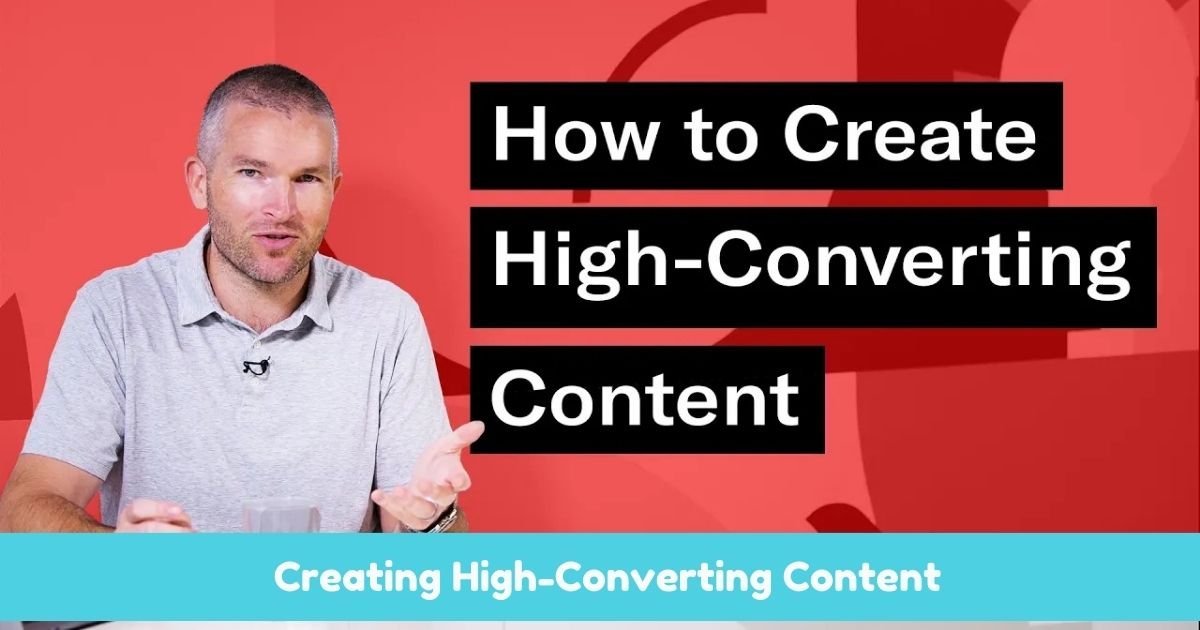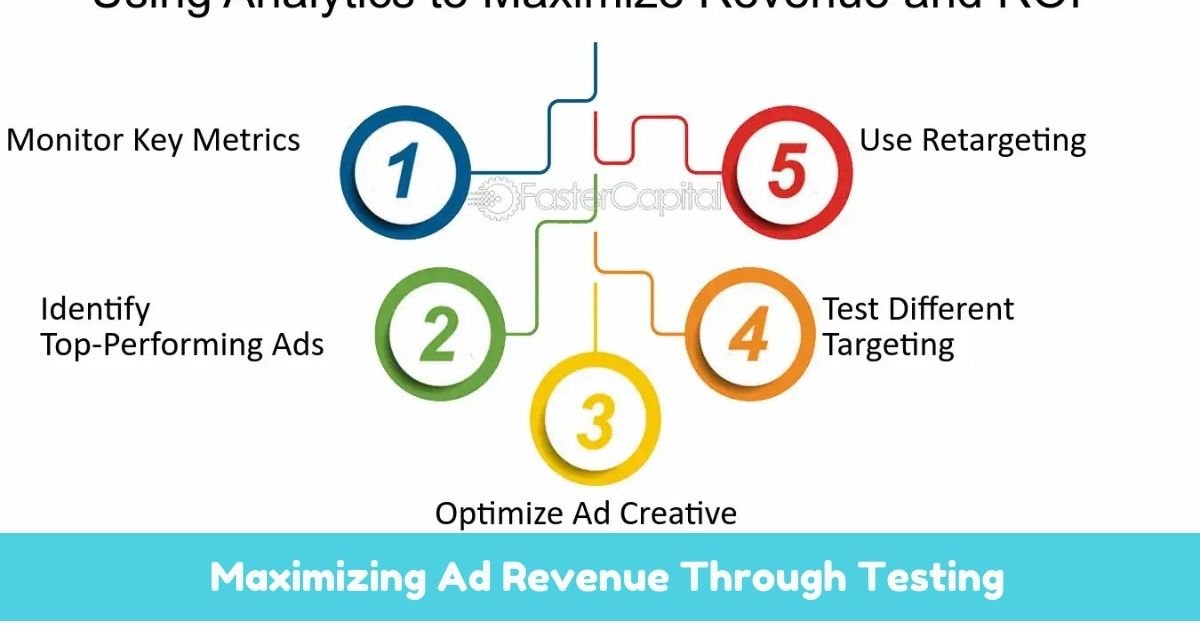How to Double Your Blogs AdSense Income in 2025
Successful bloggers like Ryan Robinson earn between $20,000 and $50,000 per month through effective blog monetization.
Smaller blogs can generate around $3 per 1,000 views, and a blog with 10,000 daily readers could earn $450 daily from ads alone. Most content creators struggle to maximize their blog ad revenue and settle for earnings nowhere near their potential.
We created this complete guide to help you implement proven blog monetization strategies that work in 2025. You learn exactly how to double your earnings using evidence-based techniques and real-life examples, whether you are starting with AdSense or optimizing your existing setup.ads
Want to turn your blog from a passion project into a profitable business?
Understanding Your Current AdSense Performance
Successful AdSense performance tracking depends on understanding the right metrics. Your focus on key performance indicators will help create a foundation to double your blog ad revenue.
Key metrics to track and analyze
Your AdSense success depends on Click-Through Rate (CTR), Revenue per Thousand Impressions (RPM), and estimated earnings. CTR shows the percentage of visitors who click on ads after viewing them. RPM tells you the average earnings per thousand page views. Your estimated earnings metric reveals approximate revenue from ad impressions and clicks.
Coverage metrics reveal how many ad requests turned into displayed ads. This metric and ad session duration help you optimize your overall monetization strategy.
Setting realistic income goals
You need a clear calculation method to understand your potential earnings. The simple formula for AdSense income is:
To cite an instance, see how $100 daily needs about 20,000 page views with a $5.00 RPM. Publishers typically earn between $0.20 to $2.50 per 1,000 views. These numbers help you set achievable targets based on your current traffic and participation levels.
Using Google Analytics for insights
Google Analytics and AdSense work together to give you deeper performance insights. The linked accounts give you access to:
- Detailed traffic analysis that shows your users ad interactions
- Earnings breakdown by user demographics and geography
- Page-level revenue data without URL channel setup
Analytics helps you spot pages with high bounce rates and improve ad placement. This integration lets you analyze income at the page level and learn which content types bring in the most revenue.
Regular metric monitoring and Analytics data help you make smart decisions about ad placement, content strategy, and monetization approaches. Success comes from analyzing these metrics and tweaking your strategy based on performance data.

Optimizing Ad Placements for Maximum Revenue
Ad placement can affect your blog monetization success by a lot. You can double your earnings by placing ads in the right spots while keeping your readers happy.
Heat map analysis for optimal positions
Heat maps show where visitors click on your ads most often. Research shows these positions get maximum clicks:
- Above the fold (visible without scrolling)
- Within article content
- Right or left sidebar
- Below article headlines
Ads placed right above the fold get the highest viewability rates. Heat map data will give a better way to place ads where users naturally look, instead of random placement.
A/B testing different layouts
A/B testing helps you compare different ad setups to find what works best. Google AdSense platform lets you:
Split test multiple variations simultaneously Track performance metrics after 24 hours Measure confidence scores up to 95%
We tested one element at a time, like background color or ad size, to measure the effect accurately. Your results become statistically valid once your experiment reaches 5,000-10,000 impressions per ad unit.
Mobile-first placement strategies
Mobile traffic keeps growing, so optimizing ads for smaller screens is vital. These strategies work well for mobile:
Use responsive ads that adjust to screen size automatically instead of fixed-size units. Place a 320×50 leaderboard where its visible to boost performance. Keep only two ad units on mobile screens at once to avoid clutter.
Lazy loading helps increase viewability rates by loading ads as users scroll down. You can achieve viewability rates above 70% with shorter pages and vertical ad sizes, especially on desktop.
Note that checking metrics through Google Analytics helps you learn about which placements bring the most revenue. You can create an optimal ad layout that maximizes earnings while keeping users engaged by combining heat map data with systematic testing and mobile optimization.

Leveraging Advanced Blog Monetization Strategies
Blog revenue maximization goes beyond simple ad placement. We learned that combining multiple revenue streams creates a resilient income strategy.
Combining AdSense with other ad networks
Your earning potential grows when you run multiple ad networks alongside AdSense. Google lets publishers display non-Google ads on the same pages as AdSense ads. All the same, you must balance your content-to-ad ratio because too many ads violate inventory value policies.
Make sure to check each networks compatibility with AdSense before integration. Take time to review each networks policies since some follow outdated guidelines that might clash with current AdSense requirements. Different networks bring varied ad formats and targeting options, which creates diverse revenue streams while keeping your site quality intact.
Auto-ads optimization techniques
Auto-ads make use of machine learning to improve ad performance automatically. The system runs tests on specific portions of your traffic:
- Content ads optimization uses 50% of traffic
- Search ads testing takes up 5% of traffic
- Format testing has sizing, placement, and native ad settings
You can fine-tune auto-ads performance by adjusting traffic percentage in the AdSense dashboard. Advanced URL settings help you apply different ad configurations to website sections of all sizes. The platform lets you control up to 500 URL groups, so you can manage ad display across domains, subdomains, and individual pages precisely.
Custom channel creation
Custom channels help you track ad unit performance effectively. These work like folders to group related ad units and analyze their performance thoroughly. Custom channels give you the power to:
- Monitor homepage-specific ad performance
- Track section-based ad effectiveness
- Analyze placement-specific metrics
The AdSense Management API helps create tailored reporting dashboards that provide detailed insights into your ad performance. You can set up to 500 different custom channels to track various ad implementations with precision.
Publishers can create multiple revenue streams while maintaining site quality and user experience by applying these advanced strategies. Success comes from finding the right balance between multiple networks, optimizing auto-ads settings, and using custom channels to track performance.

Improving User Experience to Boost Ad Revenue
Bad user experience hurts your blogs money-making potential. Research shows 53% of visitors leave if pages take more than 3 seconds to load. This makes site optimization vital for revenue growth.
Site speed optimization
Page loading speed affects user involvement and ad revenue. A single AdSense unit adds 140ms to 200ms to load time. You need speed optimization to keep viewers on your site.
Your site speed will work better if you:
- Use lazy loading for ads – this can cut load times by up to 25%
- Add caching plugins to reduce server load
- Compress and optimize images and code files
- Use Content Delivery Network (CDN) services
Mobile responsiveness
More than 90% of internet users worldwide access content on mobile devices. Your blog must work well on mobile. Without doubt, mobile-friendly sites earn more ad revenue through better user involvement and higher viewability rates.
Mobile optimization needs responsive ad units that fit different screen sizes. Desktop traffic still brings higher RPM. However, well-optimized mobile ads can boost total revenue without cutting into desktop earnings.
Navigation and layout improvements
A well-laid-out design gets more user involvement and better ad performance. User experience and ad revenue go hand in hand. Your site needs an accessible navigation system for better monetization.
Better navigation and layout needs: First, a site structure that makes all content categories easy to find. Second, clear menu systems that work well on all devices. Third, enough space between content and ads to stop accidental clicks while keeping good user experience.
Active View rates jump up with proper layout optimization. Heat map analysis shows users connect more with content when navigation elements sit in the right spots. This leads to more ad visibility and potential clicks.
These user experience improvements create a space where ads support rather than interrupt content consumption. This balanced approach leads to higher involvement rates and better ad revenue potential.

Creating High-Converting Content
A strategic mix of research, structure, and continuous optimization helps create content that converts. We learned that successful blog monetization depends on delivering value through content that addresses specific user needs.
Topic research and selection
Your target audiences needs are the foundations of effective content creation. Good research helps identify topics that strike a chord with readers and generate higher ad engagement. Here how to select high-performing topics:
- Analyze current industry trends and discussions
- Research competitor content gaps
- Identify user problems and solutions
- Track seasonal trends and timely topics
- Study search patterns and user intent
Thorough keyword research using tools like SEMrush and Google Keyword Planner helps uncover valuable content opportunities. A balanced content strategy that captures both broad and specific search intent comes from combining head terms (1-3 words) with long-tail keywords (3+ words).
Content structure optimization
Content broken into digestible segments improves readability and engagement. Both user experience and ad performance benefit from properly formatted content that keeps readers engaged longer.
A well-laid-out post has:
- Compelling headlines that grab attention
- Short paragraphs (maximum 5 lines)
- Strategic use of headers and subheaders
- Proper spacing between content elements
- Clear calls-to-action
Googles algorithm updates emphasize supporting smaller, independent publishers who create genuinely helpful material. The September 2023 update saw Google improve its search capabilities to reward useful, original content that goes beyond simple information.
Engagement metrics analysis
Engagement metrics give us a full picture of content performance. These numbers show how users interact with your content and ads. This data helps optimize future content creation and ad placement strategies.
Key engagement metrics to watch:
- Click-through rates (CTR)
- Time spent on page
- Bounce rates
- Social shares
- Comment activity
Whatever your blogs size, these metrics help identify what works with your audience. Understanding engagement patterns lets you refine your content strategy and maximize both user value and ad revenue potential.
Quality content attracts loyal audiences and makes users more likely to interact with ads. Publishers can serve both reader interests and monetization goals better through continuous monitoring and optimization of these metrics.

Implementing Advanced SEO Techniques
SEO techniques are vital to successful blog monetization. These optimization strategies directly affect ad visibility and revenue potential when properly implemented.
Keyword research and optimization
Tools like Google Keyword Planner give great insights into search patterns and user behavior. The platform helps users find relevant terms by analyzing search volumes and suggesting bid estimates for potential keywords. Publishers can identify valuable terms that match their content strategy through complete keyword analysis.
Google AdWords Keyword Planner gives content creators several benefits:
- Find new keywords related to your products or services
- Research search volume trends over time
- Estimate potential traffic and involvement
- Plan content based on keyword performance
Successful keyword optimization needs constant monitoring and updates. Publishers should track keyword performance through tools like Google Analytics and adjust their strategies based on up-to-the-minute data.
Technical SEO improvements
Technical optimization substantially affects search rankings and ad performance. Too many or poorly placed ads can slow down website loading speed, which hurts search engine rankings. Here how to improve technical SEO:
- Monitor and improve Core Web Vitals:
- Largest Contentful Paint (LCP)
- First Input Delay (FID)
- Cumulative Layout Shift (CLS)
Sites with optimized technical elements show better engagement rates and ad performance. Page load speed is vital since ad units typically add 140-200ms to load time.
Content clustering strategies
Content clustering is a powerful SEO strategy that improves rankings and AdSense performance. This approach creates a central pillar page with links to related subtopic articles, which forms a complete content ecosystem.
Content clustering offers these benefits:
- More page views through internal linking
- Better user experience through arranged content
- Better search engine rankings
- More ad impressions from longer site visits
A successful content cluster needs careful planning. Start with core topics in your niche, then create detailed pillar content with supporting articles that target long-tail keywords. This strategy improves SEO and creates many opportunities to place ads strategically.
Regular review of cluster performance through Google Analytics and AdSense reports leads to better results. This informed approach helps you find high-performing content combinations and ways to optimize, which leads to more ad revenue through better search visibility and user engagement.

Maximizing Ad Revenue Through Testing
Systematic testing is the life-blood of a successful blog monetization strategy. Publishers can identify the best ad configurations to maximize revenue through careful testing and analysis.
Split testing methodologies
Publishers can compare different ad variations systematically with A/B testing. The site traffic splits between original settings and new variations to measure performance differences. The best results come from:
- Select specific elements to test (e.g., ad placement, color, size)
- Create variation with clear hypothesis
- Split traffic between versions
- Monitor performance for 24-48 hours
- Choose winner based on data
Valid statistical results need 10,000 to 12,000 impressions. AdSense calculates confidence scores automatically, and a 95% confidence level suggests reliable test outcomes.
Performance tracking tools
Publishers can get detailed performance insights by connecting Google Analytics with AdSense. Linked accounts provide access to:
- Detailed revenue attribution by page
- User behavior analysis
- Geographic performance data
- Device-specific metrics
Publishers can create custom reporting dashboards with the AdSense Management API to track performance in detail. Custom channels work as organizational tools that let publishers monitor up to 500 different ad implementations.
Data analysis and implementation
Key performance metrics help make smart optimization decisions. The essential metrics include:
Revenue Metrics:
- Page RPM (Revenue per thousand page views)
- Impression RPM
- Cost per Click (CPC)
- Estimated earnings by country
Engagement Metrics:
- Click-through rate (CTR)
- Ad coverage
- Viewability rates
- Ad requests
Heat maps show visual patterns of user interaction and help identify the best ad placement zones. This data helps optimize ad positions to maximize visibility and engagement.
Analytics can track referring sources to learn which traffic channels bring the most valuable visitors. Publishers should also check browser compatibility issues that might affect revenue.
Patience and consistency lead to successful testing. Publishers should wait for enough data before making changes. Revenue increases of 40-50% come from systematic testing that continues until reaching significant results.
AdSense lets publishers run multiple experiments on different ad units at once. This feature allows detailed testing while you retain control over site-wide ad performance. Strategic ad placement in high-value locations comes from analyzing exit pages and user behavior patterns without hurting user experience.
AdSense implements winning experiments automatically to streamline optimization. This systematic approach to testing and implementation leads to continuous improvement in blog ad revenue with informed decision-making throughout the process.
Scaling Your Blog Traffic
Quality blog traffic is the foundation of successful monetization. We scaled our blog traffic using multiple channels that combine content promotion, social media presence, and email marketing.
Content promotion strategies
Your reach and engagement will grow when you promote content on multiple channels. Platform-specific promotion tactics that match your target audience priorities work best. This approach creates deeper connections with readers and maintains steady traffic growth.
To maximize content visibility:
- Share content on social platforms based on each audience
- Get involved in relevant online communities and forums
- Create content variations for each platform
- Build relationships with industry influencers
- Run strategic paid promotion campaigns
Quality beats quantity every time. Google rewards content that shows expertise and follows regular publishing schedules. Paid advertising platforms like Reddit are economical solutions to reach millions of monthly users.
Social media optimization
Social media platforms drive massive traffic when you optimize them right. The best social media strategies use platform-specific content that appeals to each audience segment. This targeted approach guides you to higher engagement rates and more blog traffic.
Your social media will work better if you:
- Create platform-specific content formats
- Connect with followers through comments and discussions
- Use visual content to grab attention
- Follow strategic posting schedules
- Build community through regular interaction
Facebook groups in your niche give you chances to share blog posts with targeted audiences. Of course, Instagram carousels and short-form videos are great ways to increase organic reach.
Email list building
Email lists are gold mines to drive consistent blog traffic. Your email subscribers ended up becoming loyal followers who share content and interact with your blog regularly. Here how to build a quality email list:
Lead Magnet Strategy Valuable lead magnets attract subscribers who love your content. Exclusive content upgrades or premium resources encourage sign-ups while keeping list quality high.
Strategic Form Placement High-traffic areas of your blog are perfect spots for signup forms. Exit-intent popups catch email addresses from visitors about to leave, which boosts conversion rates by a lot.
Engagement Optimization Welcome emails should introduce your brand and set clear expectations. Double opt-in verification will give a quality list and reduce spam subscriptions.
List Segmentation Smart publishers arrange subscribers based on interests and behaviors. Personalized messaging appeals to specific audience segments and leads to better engagement rates.
Content Delivery Regular newsletters featuring your latest posts bring consistent traffic back to your site. Strategic email marketing creates big traffic spikes whenever you publish new content.
Better traffic means better ad performance and more revenue. These traffic scaling strategies combined with great user experience and content quality create sustainable growth patterns that support your long-term monetization goals.
Conclusion
You can double your AdSense income with the right mix of smart ad placement, great content, and regular performance checks. Bloggers can boost their earnings by a lot when they apply these proven methods while keeping their readers happy.
Testing and fine-tuning play a crucial role in making money from your blog. Evidence-based choices about your sites metrics and how visitors behave will lead to better revenue growth. Your ad earnings will increase when you combine solid SEO practices with content that keeps readers coming back.
Top bloggers reach their income targets step by step as they make improvements in different areas. Quality content should be your priority because it naturally draws readers who are more likely to click on well-placed ads.
Take action today to begin your journey toward doubled AdSense earnings. Pick one strategy to implement, track how it performs, and make changes based on what the numbers tell you. Each improvement you make brings your blog closer to its full earning potential.
FAQs
Q1. How long does it typically take to double AdSense income? Theres no fixed timeline for doubling AdSense income, as it depends on various factors like current traffic, niche, and optimization efforts. However, with consistent implementation of proven strategies, many bloggers see significant improvements within 3-6 months.
Q2. Whats the most effective way to increase AdSense revenue quickly? The most effective way to boost AdSense revenue quickly is often through optimizing ad placements. Use heat map analysis to identify high-engagement areas on your site and conduct A/B tests to find the best-performing ad positions and formats.
Q3. Is it better to focus on increasing traffic or improving ad performance? Its best to focus on both simultaneously. While increasing traffic can lead to more ad impressions, improving ad performance through better placement and targeting can increase your earnings per visitor. A balanced approach often yields the best results.
Q4. How many ads should I place on my blog for optimal earnings? The optimal number of ads varies depending on your content and layout. However, its generally recommended to maintain a balance between content and ads. Start with 3-4 well-placed ads per page and adjust based on performance data and user experience metrics.
Q5. Can using auto-ads negatively impact my sites user experience? While auto-ads can be effective, they may sometimes impact user experience if not properly configured. Its important to monitor your sites performance metrics and user feedback when using auto-ads. You can adjust the settings or limit auto-ads to certain sections of your site to maintain a positive user experience.
